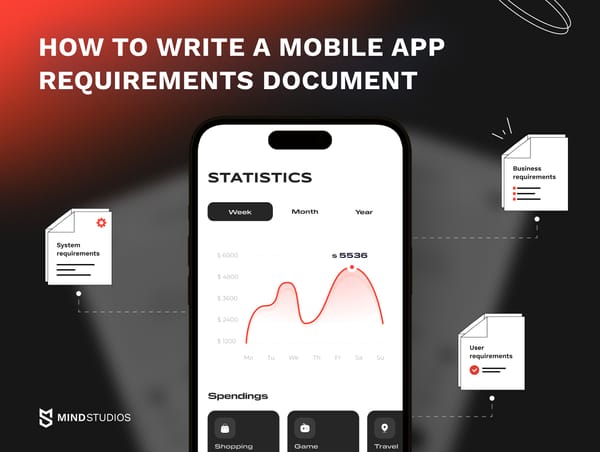Whatever product you’re looking for — from a smartwatch to a funny plastic snowball maker — chances are, you are going to find it on apps like Wish and AliExpress for chump change.
Despite the fact that the products selling there are often of poor quality, platforms like this continue to thrive. And that’s why the idea to create an online shopping app of your own can work out for your business.
In this article, we discover what features are essential to a shopping app, explore the development approaches to building it, and reveal how much shopping app development might cost.
Furthermore, we share Mind Studios’ own experience in app development and dig into ways to make a shopping app that would be far better than Wish and AliExpress.
Reasons to start shopping app development in 2022
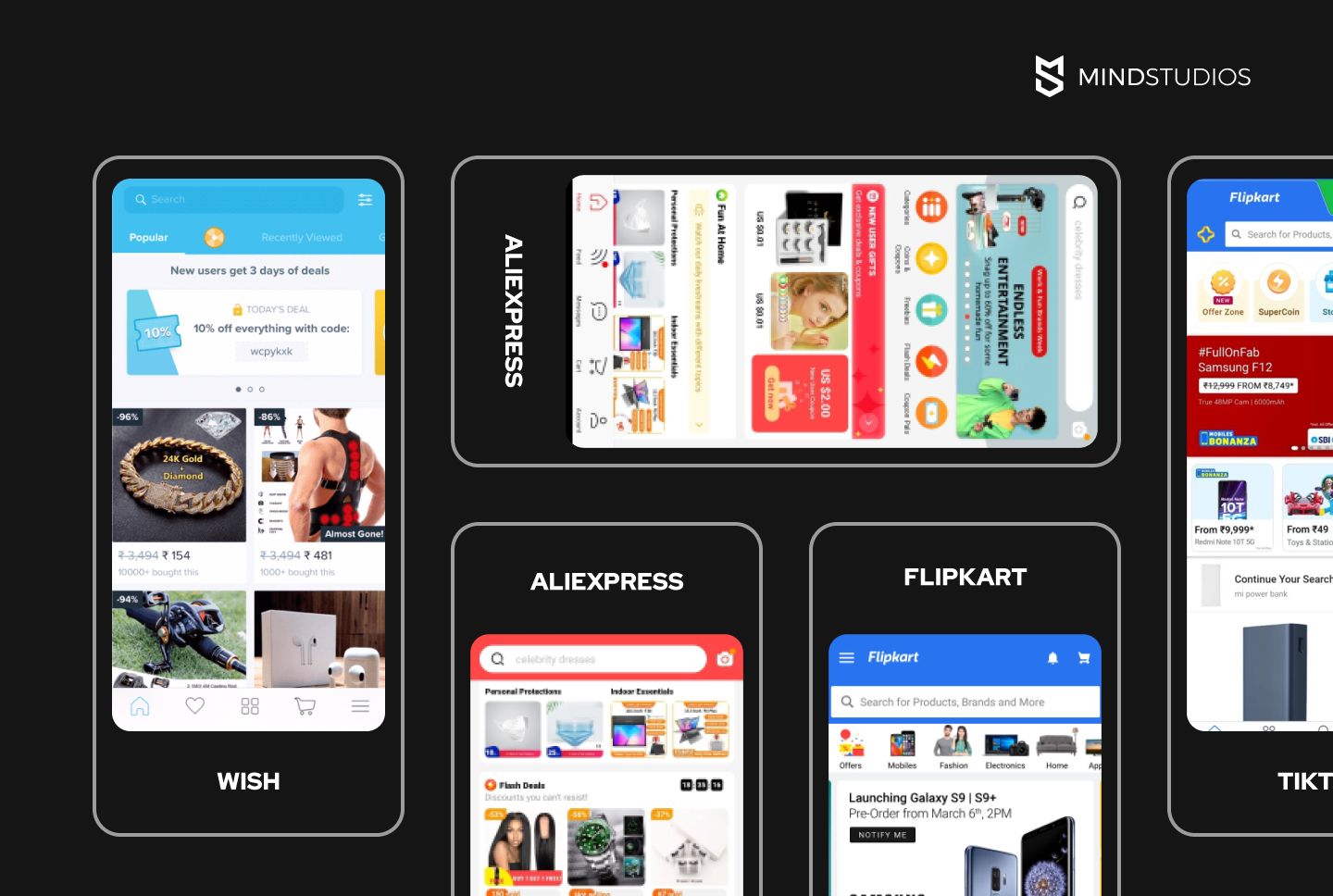
There’s no debate on whether the existing eCommerce platforms are thriving — they certainly are. The question is, should you make an online shopping app of your own? And if so, why build a platform like Wish? Let’s take a look at why and how starting a shopping app can benefit your business.
The rise of mCommerce platforms
Mobile shopping apps have been gradually taking over the eCommerce industry for quite some time now. Here are some numbers to prove this point:
- Global mCommerce transactions reached $2.8 trillion in 2021 and are expected to reach $4.9 trillion by 2025
- In 2021, mCommerce’s share in all global eCommerce sales amounted to 52.7%
- 79% of smartphone users have made a purchase online via their mobile device in the last 6 months
Platforms selling cheap products hold a prominent place among other eCommerce platforms. For instance, both Wish and AliExpress apps have been downloaded over 500 million times from Google Play Store alone. Considering the current eCommerce market, building an mCommerce platform like these giants can totally be a profitable idea.
An effective way to expand your business
Following the Wish business model means cooperating with numerous merchants. At the same time, since your platform would be just a link between the buyers and the manufacturers or retailers, you won’t actually have to produce anything or keep stock yourself.
At the same time, building such a platform can give you access to a broad target audience, which respectively means higher turnover and revenue growth.
The key here is to create enticing conditions for both sellers and customers. Providing them with an easy-to-use modern mobile app is one of the perks that can be appealing to them.
Moreover, if you make sure it has advanced in-built analytics features, it will be easier for you to understand and address users’ needs, which will lead to rapid business growth.
An opportunity to do it better than Wish
By the end of the first quarter of 2022, Wish had 27 million monthly users. A year earlier, in 2021, this number was as high as 101 million. It would be more than fair to say that the company is struggling, and with reason.
Over the years, Wish has become a platform infamous for bad customer reviews, fraud accusations, and poorly managed customer support service.
In addition to that, the Vox research discovered the company failed to deliver orders, issue refunds, and make authorized credit card charges. Wish is also known for turning push notifications and limited-time offers into psychological pressure on its customers.
What is more, some items sold on Wish are of such poor quality that it led to a new trend on YouTube. Vloggers started building computers with components bought from Wish just to demonstrate how they fail.
So, considering Wish is not that great of a platform, why not build a similar one but without the above-mentioned mistakes?
Must-have features for an online shopping app
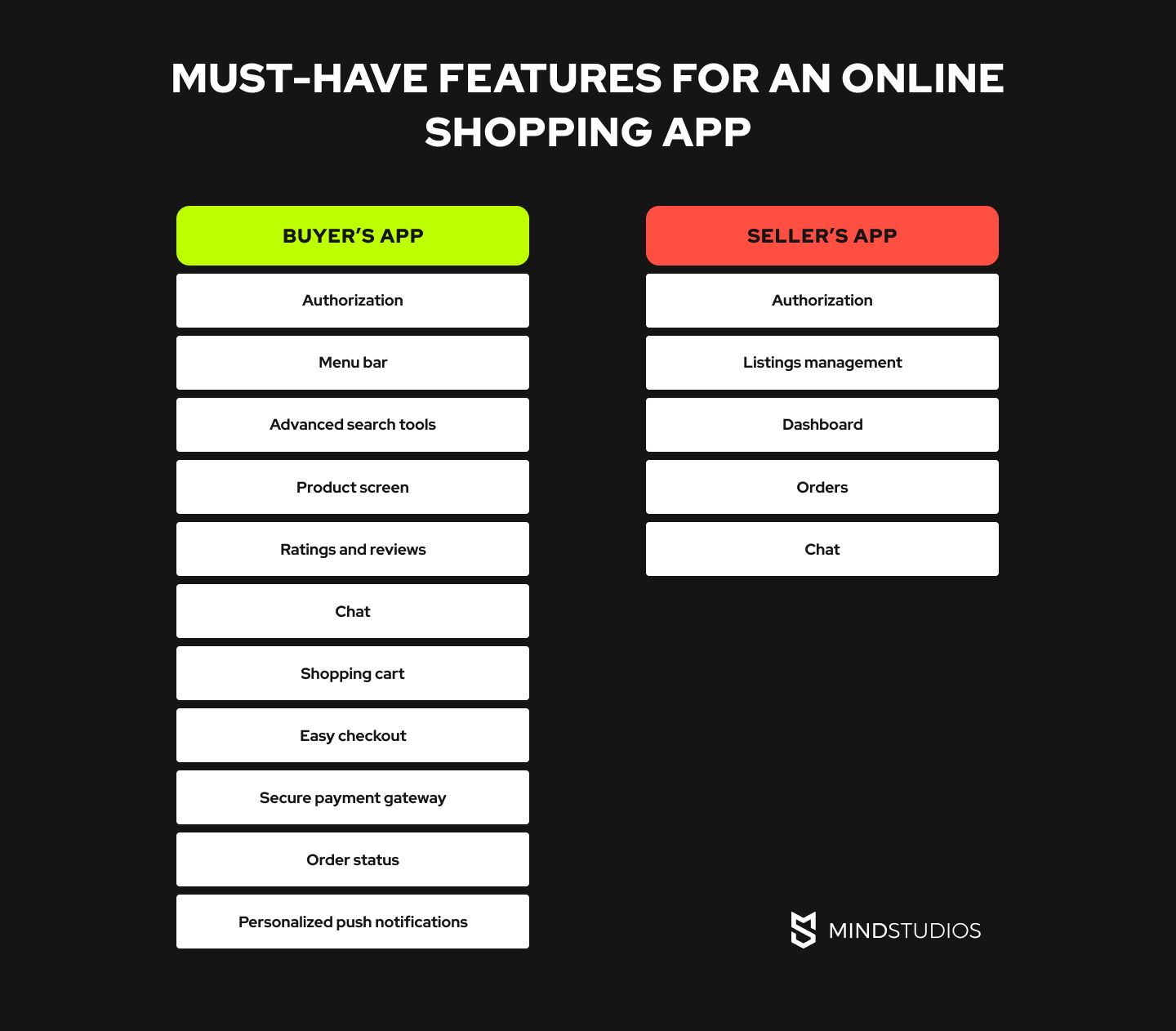
So, how to make a shopping app, and what features should it consist of? When building a shopping app like Wish, you will need to make two platforms: one for the buyers, and one for the sellers. Here, we’ve gathered the most crucial features for both of them.
Essential features for the buyer’s app
- Authorization with easy-to-complete sign-up and sign-in features via email or social media
- Menu bar with product categories and subcategories
- Advanced search tools that enable users to easily find necessary items with the help of various sorting and filtering options
- Product screen, which includes images, detailed descriptions, and price
- Ratings and reviews where customers can share their experience, as well as read other buyers’ feedback
- Chat to communicate with the seller and specify any information about the product, shipping details, etc.
- Shopping cart with an opportunity to edit it and go through the products’ descriptions again
- Easy checkout that doesn’t require users to type in tons of information
- Secure payment gateway, which allows for as many payment options as possible (credit cards, digital wallets, cryptocurrency, etc.)
- Order status that the sellers will be able to update
- Personalized push notifications that can notify customers about discounts for items in their search history, new or exclusive deals, etc.
Essential features for the seller’s app
- Authorization via email or social media
- Listings management where sellers can upload images, add and edit product descriptions, set up the price, etc.
- Dashboard with data on orders, ratings and reviews, products’ popularity and so on
- Orders, including ongoing and completed ones
- Chat to be in touch with customers
Advanced features for an online shopping app
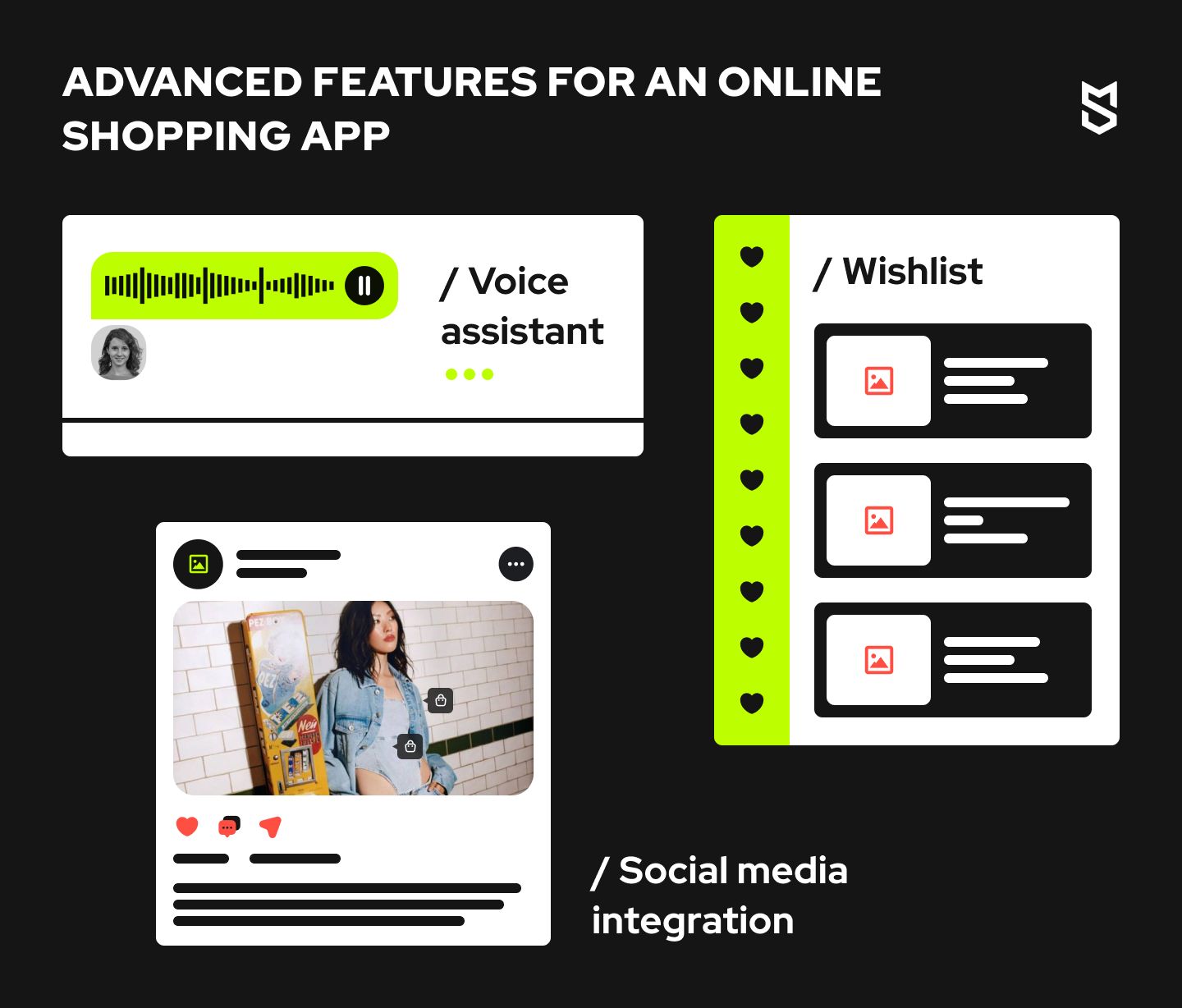
Features that we’ve listed in the previous section are fundamental for any mCommerce platform. However, to have a chance of succeeding, you need more than that. Here are Mind Studios’ suggestions for advanced features that will help you create an online shopping app, which will be appealing to prospective customers.
Voice assistant
Since the whole point of shopping apps is to make the shopping experience easier, this AI-powered feature would be especially helpful to a whole generation of people who are always on the go. Users can search for necessary items, request more information about them, and simply navigate the app quicker.
Though these features might be more expensive than the basic ones, it pays off. According to Coupon Follow, online shoppers who made purchases at least once a week via voice assistants spent $136 more, on average, per month than customers shopping through clicking.
Personalized recommendations
One of the essential steps to improving the shopping experience is creating personalized recommendations for individual users based on their search and shopping history, wish lists, geolocation, and so on. As a result, customizing the recommendations increases the chance of your users actually making a purchase.
Shopping incentives
Platforms like Wish are known for turning shopping into a fun, engaging experience, encouraging users to make quick, sometimes irrational purchases. Wish offers various collecting games, meaning users get small prizes for simply visiting the app. There is also a game similar to the wheel of fortune and Wish Cash, which is store credit that can be used to buy items on the app.
While Wish can be too pushy bombarding users with its offers, you can provide users with shopping incentives, like games or their own digital coins, that are valuable to them based on their shopping preferences.
Social integration
Social eCommerce is a trend that cannot be ignored nowadays. According to Insider Intelligence, about half of US adults made a purchase via social media in 2021, while in China, social commerce is expected to account for 14.3 percent of online retail sales in 2023.
You can simply add a social sharing feature or go further, as Wish did, and enable sellers and buyers to follow and communicate with each other within your app. This helps customers to keep track of their favorite sellers’ offers and allows retailers to form a customer base, all on the same platform.
Cutting-edge technologies for your shopping app
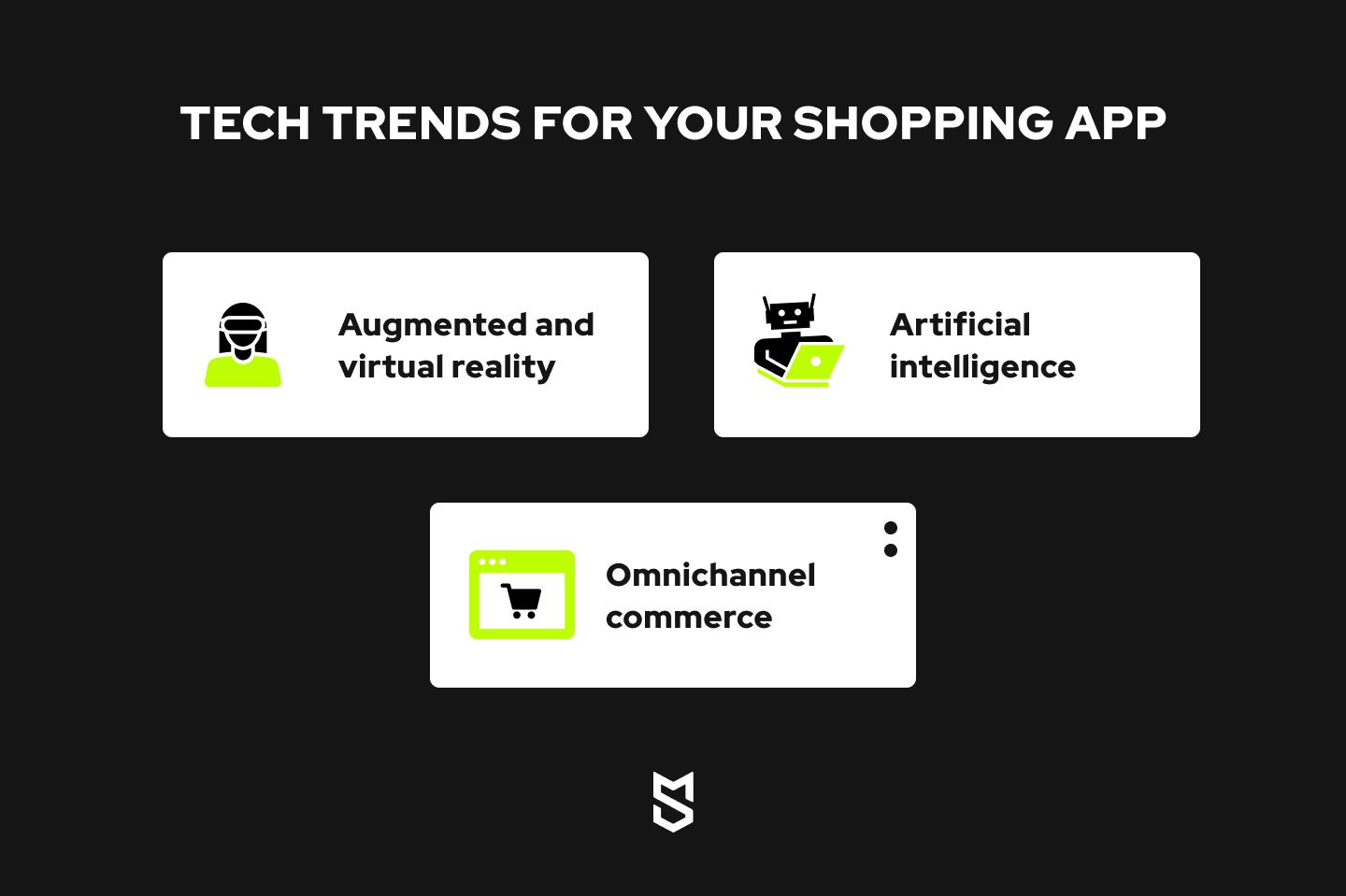
When building a shopping app, the opportunities to make it even more modern and easy to use are almost unlimited.
Therefore, we’ve gone beyond the advanced features and looked into the latest tech trends that you can integrate into your shopping app. Naturally, they can significantly increase the development costs, but the value of the app will increase exponentially.
Augmented and virtual reality (AR/VR)
In 2022, Snapchat commissioned a survey on AR/VR trends from Deloitte Digital that involved 15,000 consumers across the world. According to this study, by 2025, almost all global smartphone users will be frequently using AR technology. While now 65% of AR adopters use AR for fun, 76% of people expect it to become a “practical tool” in their lives.
Marketplace owners can use AR/VR as a way to avoid the problem of customers returning products. The “try before you buy” feature is a great way to check whether the product will suit the customers’ needs. Among successful examples are Ikea with its furniture try-out feature and Sephora’s Virtual Artist, which lets users virtually test makeup products.
Artificial intelligence (AI)
The significance of AI tools can’t be overestimated. According to Accenture research, AI is expected to boost profitability by 59% in the retail and wholesale sectors by 2035.
In addition to the voice assistants that we’ve mentioned in the previous section, you can use AI for a shopping app to create a customer-centered shopping experience. Image recognition, smart search, retargeting, and personalized ads are just some of the tools that can encourage users to make a purchase.
Another important function of AI is automation. With AI-powered tools, shopping app owners can make any process automated: from 24/7 customer support to identifying fake reviews.
Omnichannel commerce
This approach allows retailers to deliver a smooth customer experience through different channels: via a website, a mobile app on a customer’s smartphone, social media, and in a physical store.
Using omnichannel commerce allows customers to combine online and offline shopping. For instance, they can make a purchase online and pick up the item in the store, or read reviews on the app while shopping in a brick-and-mortar store.
The omnichannel approach allows businesses to create unified offers that will motivate customers to shop more through different channels. At the same time, it’s important that the communication strategy of your platform is consistent on all platforms: be it an app notification, an email, or a social media page.
Payment gateway integration for your shopping app
One of the reasons shopping apps have become so popular is the evolution of digital payments that made it possible to purchase goods in a matter of seconds. Therefore, we couldn’t skip the payment part of a shopping app.
Basically, a payment gateway is what allows customers to pay for their orders directly through the app and enables sellers to receive those online payments.
The fundamental functions of a secure gateway are receiving, encrypting, and transmitting transaction data. As a rule, the parties involved in the payment operations are the issuing bank, the international payment system, and the merchant bank.
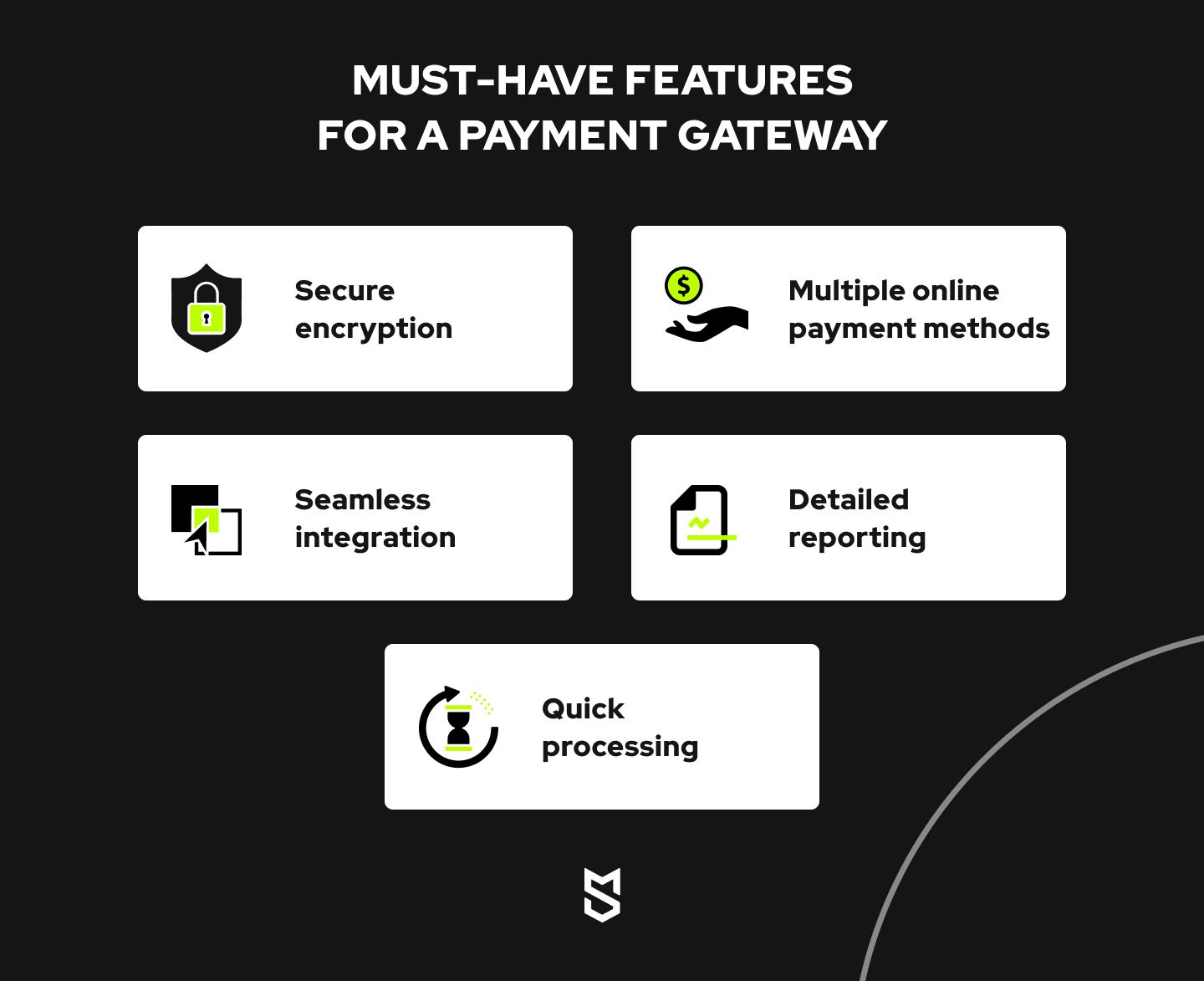
Based on our experience, we’ve made a list of 5 must-have features for a shopping app payment gateway:
- Secure encryption
To become loyal customers of a shopping app, users need to know that the platform protects them from fraud and data breaches. A secure payment gateway must be certified with level 1 PCI DSS compliance (an internationally recognized payment card industry data security standard). - Multiple online payment methods
Providing users with alternative payment methods is another perk your app can offer. Make sure the payment gateway you choose supports not just credit and debit cards, but also e-wallets and cryptocurrency transactions. - Seamless integration
The possibility of easily integrating the payment gateway into an eCommerce app is also of utmost importance. Some payment gateways don’t require code setup, meaning you will save money during the app development stage. Also, such solutions make it easier to manage orders and payments. - Detailed reporting
While for the buyers security is of the highest priority, the sellers using your app will also appreciate the opportunity to use the payment gateway for detailed financial reports and a faster reconciliation process. - Quick processing
Quick money transferring that works smoothly on every device can help you increase conversion rates, as well as lower bounce and cart abandonment rates. It is also of critical importance to the sellers, since some payment systems process transactions in one business day, while others may take up to a week to do that.
Some of the most popular payment gateways are PayPal, Stripe, and Braintree. However, it’s better to discuss the best possible solution for your specific project with the development team, since each system has its pros and cons.
Setting up product import/export functionality
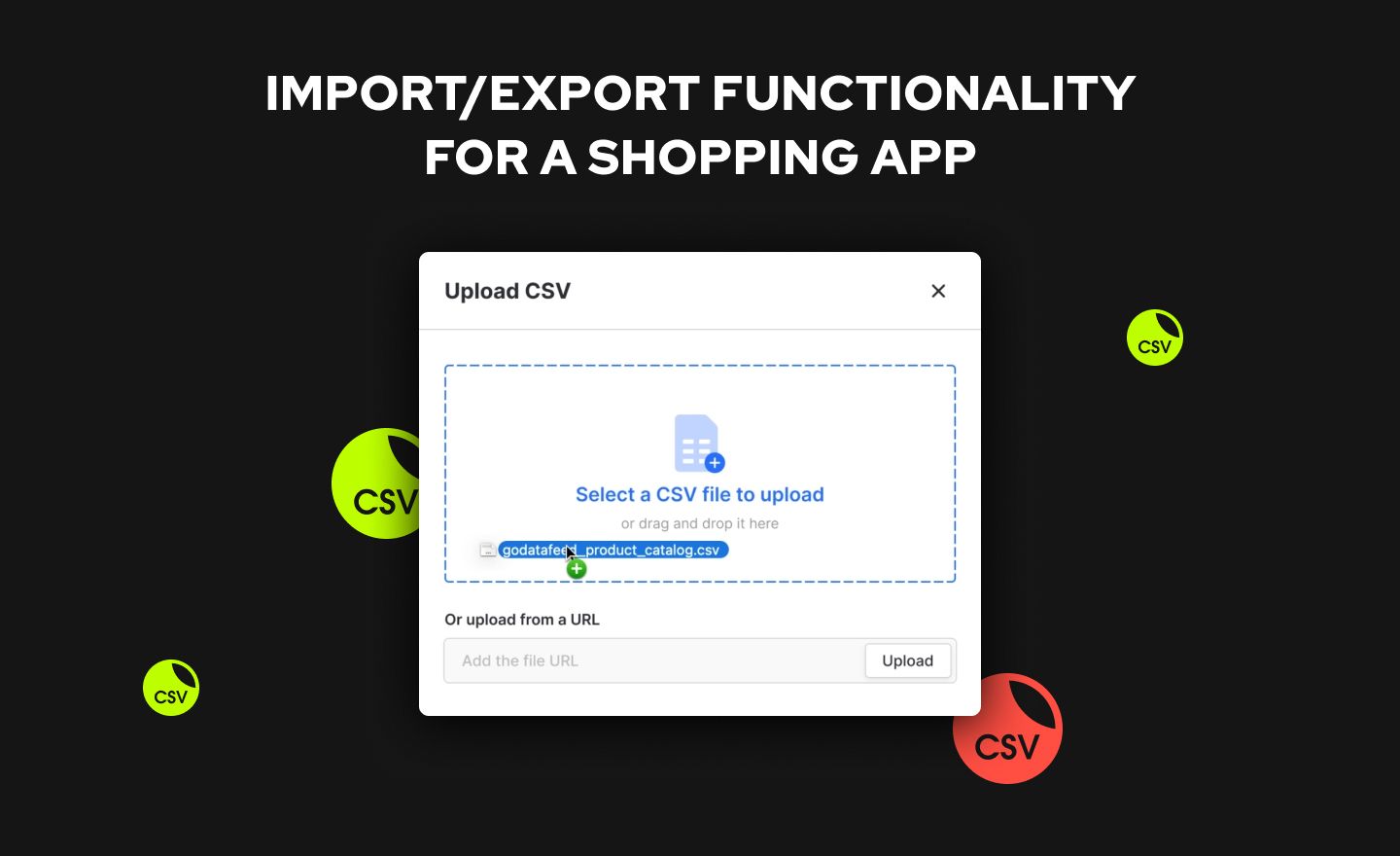
Running an eCommerce platform like Wish involves dealing with huge amounts of data, most of which is product and order data. And for apps of such scale, managing the data manually is not an option. That’s why you will need a tool that will automate the process of data import and export.
Here are the most common case scenarios for when you will need an import/export functionality for your shopping app:
- Having a large catalog of products that require transferring or updating
- Sending product data to warehouses, such as product name, description, shipping method, price, etc.
- Exporting and importing product catalogs to other eCommerce platforms
- Updating product information in bulk
- Downloading data on store discounts
- Adding and updating sellers' information
- Exporting customer information and order history details
The easiest way to manage thousands of products and orders is through CSV files. CVS stands for “Comma-Separated Value”. To put it simply, it is basically a text file with tables or spreadsheets of data, ending with the extension .csv.
CSV files are widely used by eCommerce companies to quickly upload and download data. The text format of the files makes it easy for business owners to read and edit the information without having to turn to developers or data experts. CSV files are also easy to create and edit since they are compatible with other text editors, like Google Sheets and Microsoft Excel. Moreover, they are of small size, which turns data transferring into a quick and smooth process.
Depending on the type of the app, there are various options to import and export those CSV files. For instance, the development team can use import/export extensions or come up with a custom-built solution for this purpose. For a shopping app, such import/export functionality must allow to:
- Export products into CSV
- Import products from CSV
- Add or update products in bulk
- Export and import product reviews
- Import and export product categories, tags, stock status, etc.
- Export products based on stock status or other applied filters
If you decide to create a shopping app together with Mind Studios, our team will provide detailed instructions on how to use the selected import/export solution. Feel free to contact us for a consultation.
Shopping app UI/UX design tips
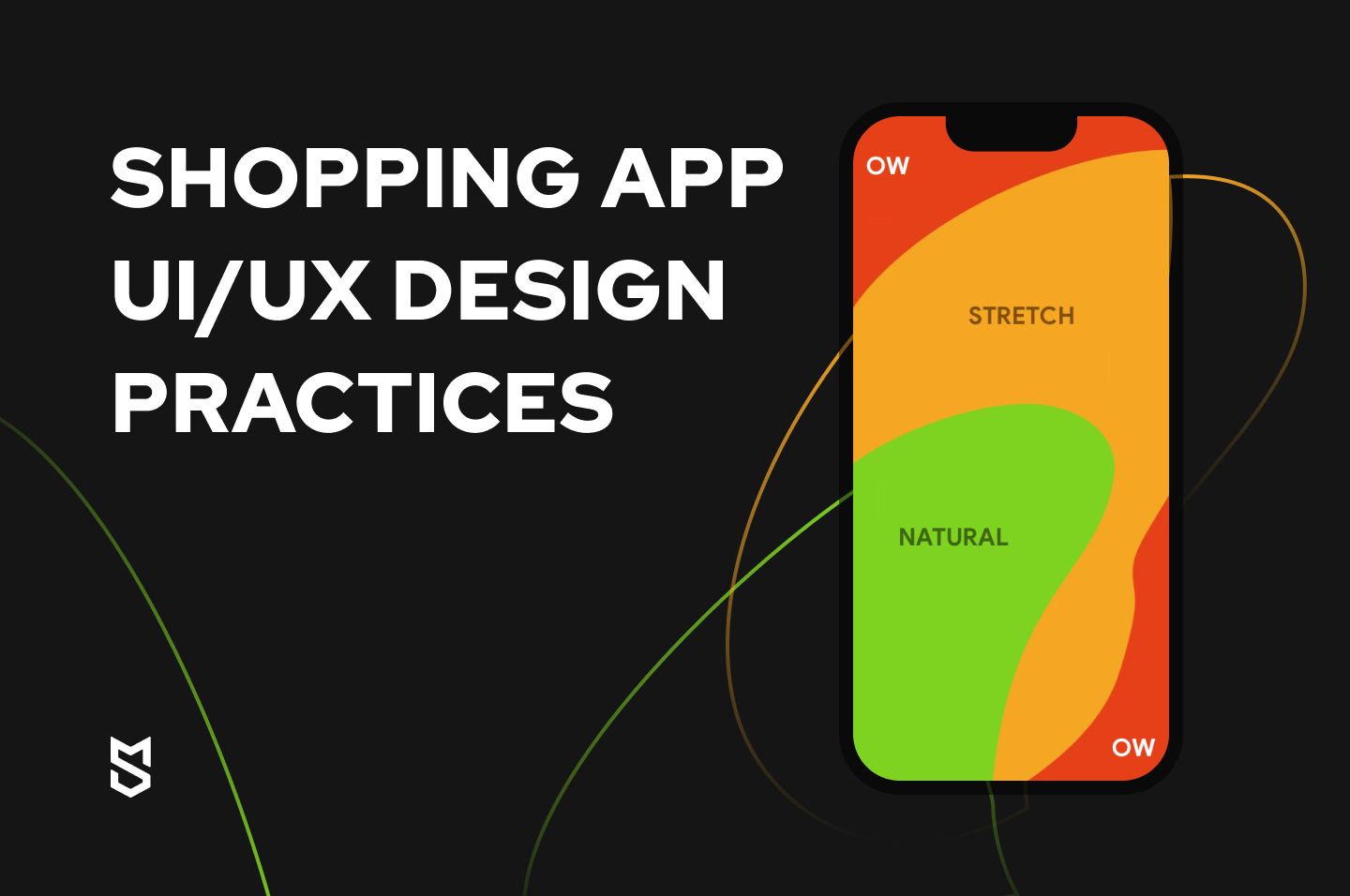
Your shopping app might offer a great variety of products at affordable prices, but with poorly created UI and overly complicated UX design users won’t stick with your app for long. Get acquainted with a list of the best UI/UX design practices that will help you understand how to build an online shopping app and get it noticed.
Effortless navigation
When shopping via a mobile device, users don’t want to spend time learning how to use the app. Therefore, an mCommerce platform needs to be intuitive and easy to navigate.
You can check whether your app is like this with the help of a three-tap rule: if it takes no more than three taps for a user to find the item, then the app is intuitive. You can achieve this by making all the crucial elements, like a menu bar and a shopping cart, available on each of the app’s screens.
Comprehensive categorization is also a must for eCommerce platforms. You can even go further than the standard categories and use tags to sort products by relevant selections like “Christmas presents”, “Easter treats” and so on.
Clean and orderly interface
The main focus of eCommerce platforms should be on the products and services it’s offering. Therefore, it’s advisable to keep the interface neat and simple if you want to increase the chance of users actually buying something. This means using simple, preferably monochromatic color schemes, as well as just one or two fonts, and providing enough spacing.
Remember that too many animations, buttons, and non-functional elements can distract users from the primary reason they opened the app.
Focus on the shopping cart
Adding an item to a shopping cart doesn’t mean buying it yet, and it's up to you and your development team to make it convenient and encouraging enough for the user to complete the purchase. Make sure the product descriptions are visible in the shopping cart, enable editing features, and provide easy checkout with multiple payment options.
Another tip is to make the shopping cart visible at all times. This way, the users will be less likely to forget that they have set their eyes on certain items in the first place.
In addition to this, you can work out abandoned cart workflow automation to encourage the customer to come back and continue their shopping journey.
Thumb-friendly screen zones
This practice makes the customer’s journey even more seamless by providing users with space on the screen that they can easily reach with a thumb while holding a smartphone in one hand. For instance, lower corners and the screen center are easier to tap on, so crucial elements like “buy now” or “quick checkout” should be within those zones.
Tech stack required to build a shopping app
The development approach might vary in different teams, which affects the choice of technologies required to make a shopping app like Wish.
Here is Mind Studios’ answer to the question of how to create an app for online shopping with core features, in terms of technology stack:
| The tech stack for a marketplace app | |
|---|---|
| Mobile platforms | Android, iOS |
| Programming language | Kotlin for Android, SwiftUI for iOS |
| Framework | Ruby on Rails, Phoenix, Nest.js |
| Cloud environment | Azure, Google, AWS |
| Real-time chat feature | Websockets, Sidekiq, Twilio |
| Database | Firebase, PostgreSQL, MySQL |
| Push notifications | Firebase, APNs, Amazon SNS |
| Payment Gateways | Apple Pay, Google Pay, PayPal, Braintree, Stripe |
Things you should note before making a shopping app
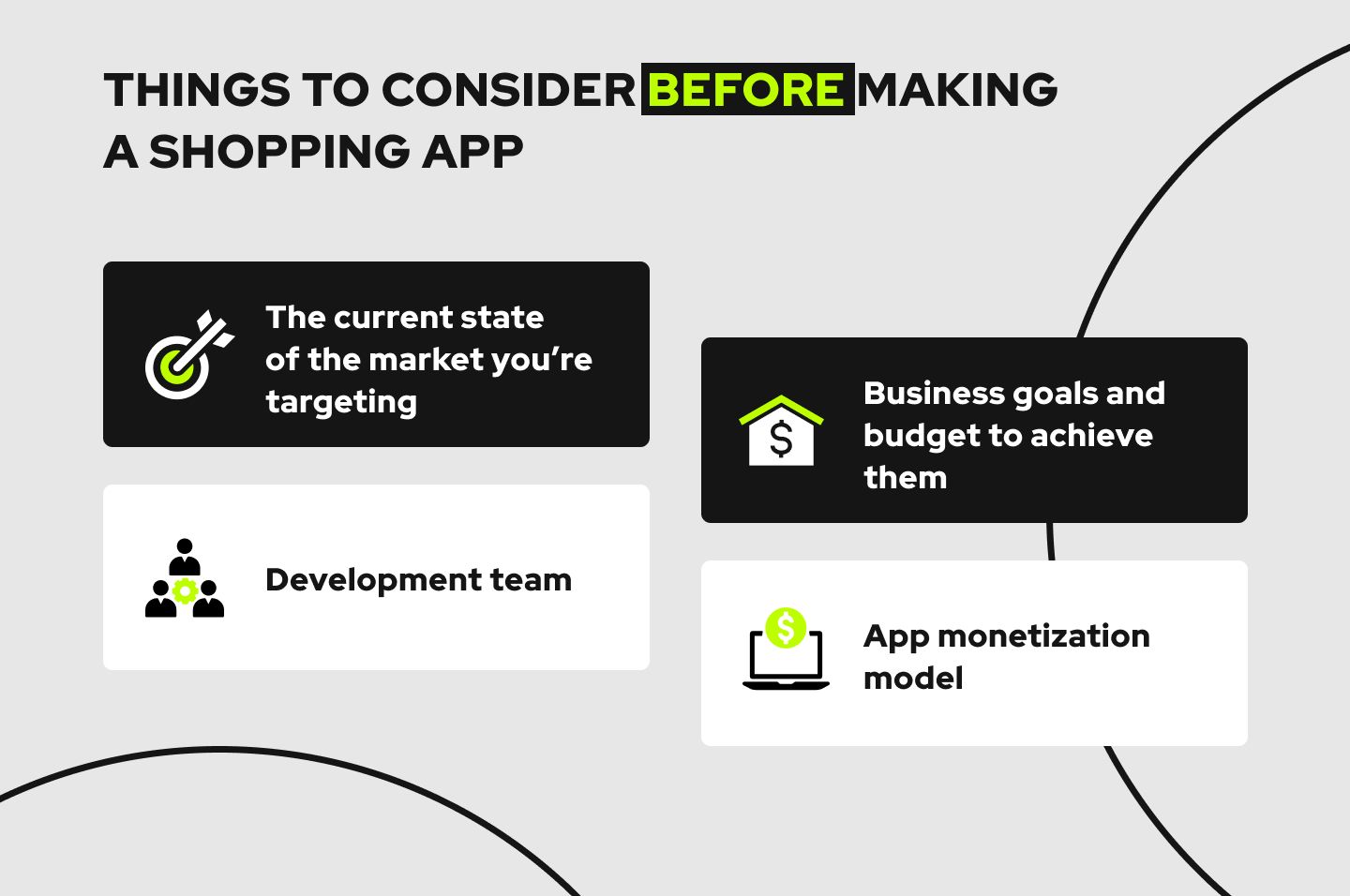
Before getting down to online shopping app development, you need to have a solid and carefully planned strategy. Below, we share 4 essential things that you need to take into account while developing one.
1. The current state of the market you’re targeting
Let’s say you’ve got an idea for a shopping app. The first step to take now is to check whether there is space on the market for it, what competitors you might have, and how it will serve the users.
The simplest way to do that is to simply search for similar apps through tags and analyze reviews from their users. Also, make a list of the competing apps’ most compelling features and their drawbacks.
In addition, it might be useful to use keyword research strategies to determine what your target audience is looking for. All this will help you shape your own app’s concept (and decide whether it’s a viable idea at all).
2. Business goals and budget to achieve them
Depending on what you’ve found out during the market research, you can now work out the concept of your idea, and identify the goals you want to achieve with it. To do so, you need to single out the main purpose of your application.
Is it going to be solely a shopping app, or a trading one as well? Do you plan to start a new business with this mCommerce platform, or will it be a tool to strengthen your existing enterprise? The answers to these questions will determine the vector for the project.
Once you’ve come up with the business goals, it’s time to sync them with the budget you can spare for project implementation. If the goals do not coincide with the budget, you can prioritize, leave the most crucial objectives, and scale the project along the way.
Speaking from experience, we would recommend being honest about the budget with your shopping app development partners right from the start.
3. Development team
Picking a team to build a shopping app depends on various factors, key of which are the budget that you have for the app, the experience you require, and the scale of the project.
It might be a wise idea to hire an in-house team for a large-scale long-term project, though naturally, it is quite an expensive option. If you, however, choose to outsource the project, keep in mind that the hourly rates vary drastically depending on the company’s geographic location.
For instance, working with a US-based team can cost you an average of $150/hour, while Eastern European teams can charge one-third of that and provide the same quality.
No matter which way you decide to go, be sure to make a thorough background check on your candidates. For this, you will need to examine the teams’ Clutch and GoodFirm reviews, check out their previous projects and conduct an interview to see if the team is able to help you achieve your business goals. In the end, make sure to sign an official agreement with the team you pick.
4. App monetization model
It’s obvious that you are not building a shopping app just for fun: at some point, it will have to generate revenue. The most obvious way for a mobile marketplace to make money is to charge the sellers for each order they complete via your platform. Wish, for instance, charges a 15% commission fee. However, you can also implement other monetization models such as a membership model, listing fees model, or featured listings and ads.
Think about how you’re going to make money with your app, including the long-term growth plan before you move on to implementing the project.
How much does it cost to build an online shopping app
Some of the key factors that influence the cost of any software project are its complexity and the team involved in its development. For a Wish-like app project, the basic team would consist of the following specialists.
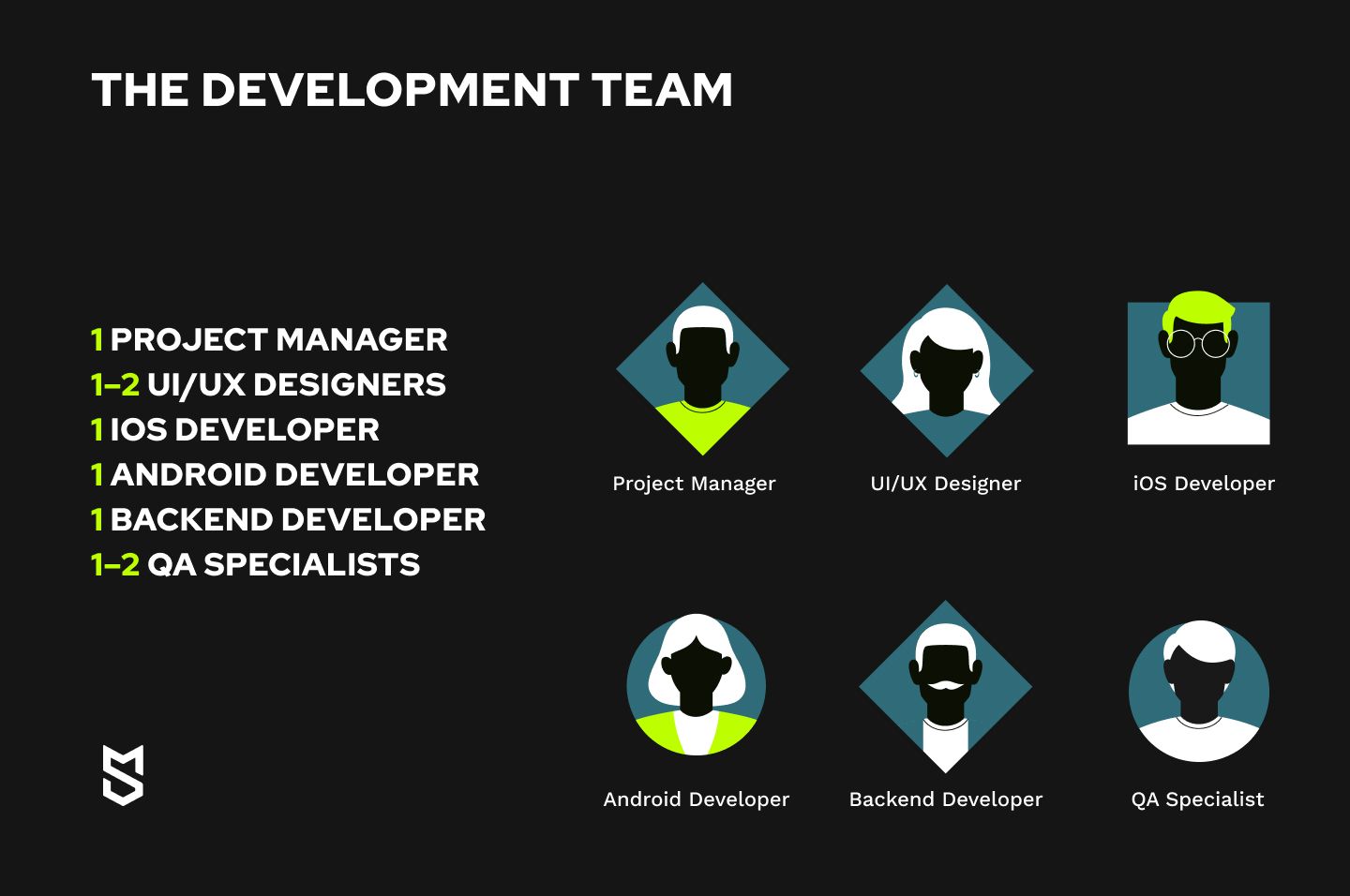
In the table below, we have roughly estimated the development costs for a Wish-like app with core features that can be a good starting point. Once you get the app successfully running, you can scale and enhance it with features like AR, AI, and so on.
The estimates below are based on an hourly rate of $45.
| Stage | Time (hours) | Cost (USD) |
|---|---|---|
| Discovery stage | 80–100 | 3,600–4,500 |
| UI/UX design | 160–240 | 7,200–10,800 |
| Android development | 480–600 | 21,600–27,000 |
| iOS development | 460–580 | 20,700–26,100 |
| Back end + admin panel | 410–520 | 18,450–23,400 |
| Testing & project management | 220–300 | 9,900–13,500 |
| Total | 1,810–2,340 | 81,450–105,300 |
To sum up, the cost to create a shopping app like Wish will start at approximately $81,450. Our team can provide you with a more accurate estimate for your specific project after a consultation.
How can Mind Studios help
Mind Studios has been helping entrepreneurs strengthen their businesses with mobile apps since 2013.
One of the most valuable insights that we’ve gained throughout this time is that it rarely makes sense to blindly duplicate existing platforms. To truly succeed, you need to address your target audience’s needs and find the niche that lacks decent digital solutions.
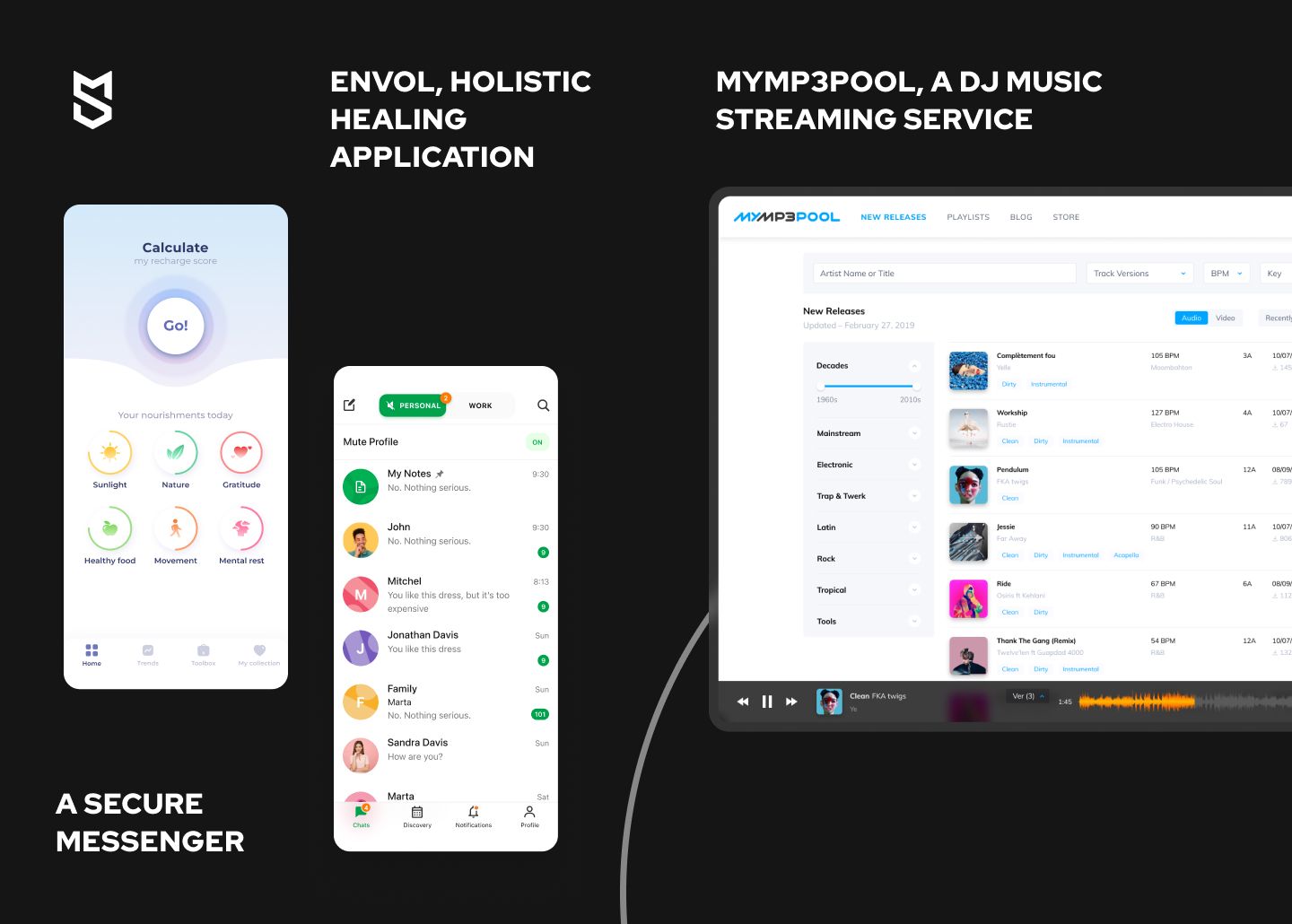
Let us explain what we mean with some examples of the projects we’ve worked on:
- Envol, holistic healing application
While there are well-established meditation and wellness apps on the market, Envol is quite different from them. It’s a tool created specifically for people healing from chronic illnesses and injuries through holistic practices, created and tested by Envol’s founder, and backed up by medical research. - MyMP3Pool, a DJ music streaming service
Unlike popular streaming services like Spotify or Apple Music, this platform was created solely to fulfill the needs of professional DJs with convenient search tools and fast performance. - A secure messenger
We built the messaging application to allow users to find their ideal work-life balance and be sure that their data is carefully protected. The latter one was of critical importance, since the app was aimed at the target audience from the Middle East, known for fierce restrictions on the use of VoIP apps.
Developing these platforms couldn’t be possible without our clients’ brilliant ideas, as well as thorough all-encompassing research of the market that we conducted to find suitable tech solutions.
The rule of finding the right niche applies to eCommerce platforms as well. You don’t need to build a clone of Wish or AliExpress — because the users already have those mobile apps. Instead, together with the development team, you can study what your audience lacks or dislikes about other platforms — and build an app to fit their requirements perfectly.
In terms of shopping apps, you can build an mCommerce platform selling items solely for Marvel fans, pet lovers, or Korean beauty products adopters — the sky is the limit when it comes to ideas. You can even build an app similar to Wish, but with better customer service and quality control. The key to finding the right solution is not to skip the research.
The discovery stage during which Mind Studios conducts such research is of critical importance to us, though it doesn’t require that much time: only about 5% of the whole development process. Therefore, we strongly recommend including it in the plan.
Final Thoughts
There is no doubt that the global eCommerce market is worth trying your luck in. The expected $5.55 trillion in 2022 eCommerce sales speak for themselves. However, can you actually build an app good enough to compete with global tech giants? The case of Wish proves you can.
We at Mind Studios strongly believe that there is always an opportunity to build a decent rival platform to the existing one, as long as enough effort is put into it. With a clear vision in your pocket and a competent development partner by your side, you can build an online shopping app that will make it in the eCommerce market.
Contact us to discuss the plan for achieving your business goals and get any of your questions on how to create a shopping app answered.

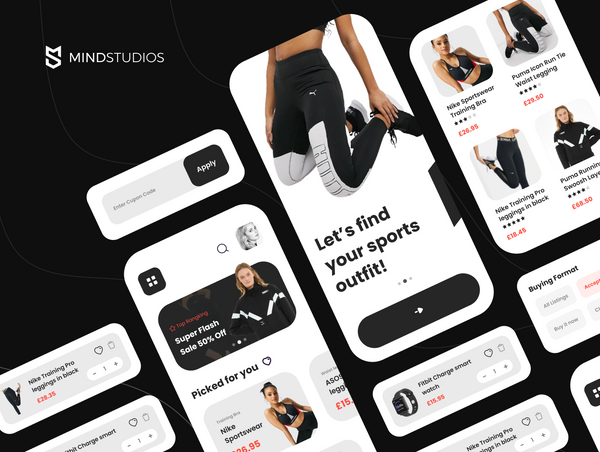
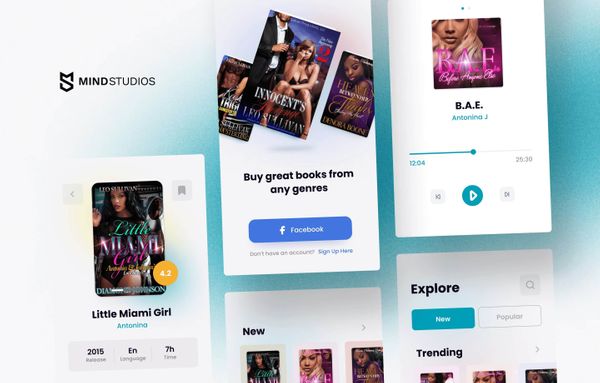
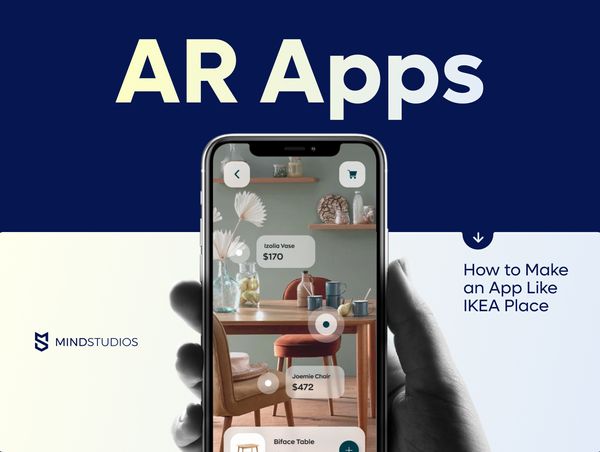
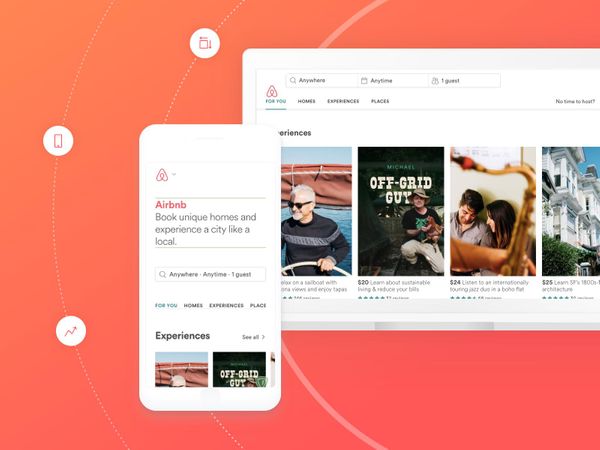
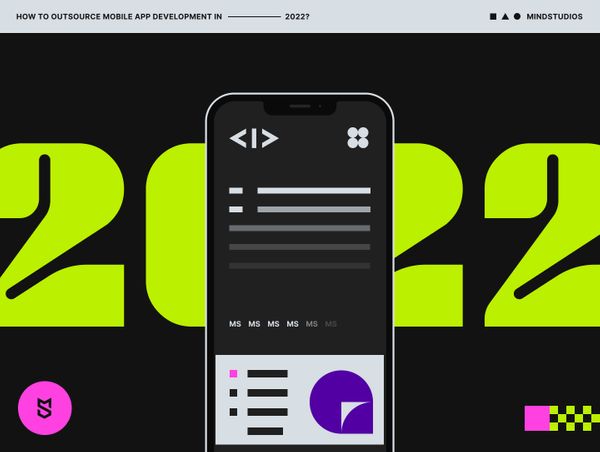

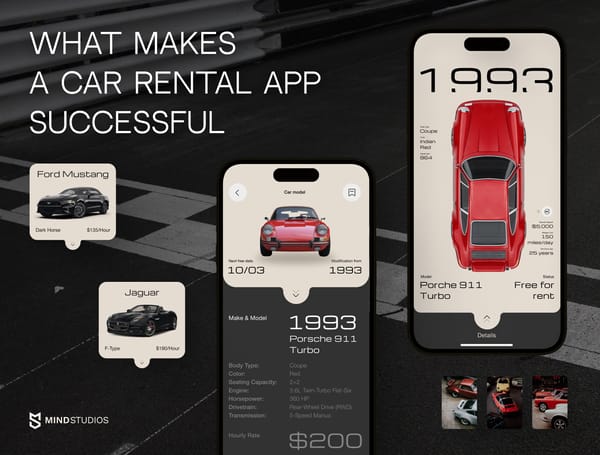
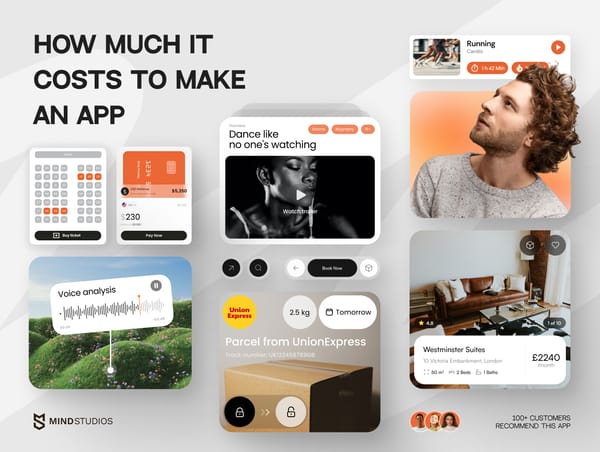
![How to Create an On-Demand Medicine Delivery App [Expert Guide]](https://themindstudios.com/blog/content/images/size/w600/2025/03/IMG-1-Cover-6.jpg)
